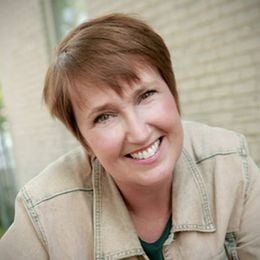Are Schools Doing Enough to Identify and Stop Ageism?
Changing kids' views about older adults can help combat stereotypes
The e-mail from her son’s kindergarten teacher left Kelly Papa shaking her head — and her fist.

“I was infuriated; I screamed at my computer,” said Papa, corporate director of learning at Masonicare, a senior care and living nonprofit in Connecticut. “I’m always expressing the worth of elders to my children and I was shocked that a different image was being put before them.”
Papa was reacting to information about how her son’s class was going to mark the 100th Day of School. The event has become popular in primary grades in recent years, meant to be a jumping off point to familiarize children with the concept of one hundred.
Papa’s son was invited to “Dress Like a 100-Year-Old” as part of his classroom’s activities. Such a masquerade has been incorporated by scores of schools, where children get in costume to look and behave as a caricature of an enfeebled centenarian — drab clothing, miniature walkers or canes, bent backs and wrinkles drawn on with makeup.
“This is a way of poking fun at the worth of another human being. It’s not cute or funny, it devalues the gifts of decades of wisdom and experience,” Papa said. “It’s ageism, pure and simple.”
Old School in Session
Research shows that lifelong attitudes about age, like those about race and gender, are formed early in life.
Now a movement to identify and call out ageism in schools is taking root to help students and teachers stop it in its tracks. At the same time, an effort to include curricula that tells the story of aging in a respectful and knowledgeable way is gaining traction.
Educators seeking to craft lessons void of ageism have a new resource, Old School, a platform which calls itself a clearinghouse of free, vetted, anti-ageism resources for educators, that offers a multitude of links and referrals to “books and blogs, workshops and PowerPoints, and organizations and advocates.”
“The messages are everywhere that old is not as good as young. We are ageist any time we make an assumption about a person or a group of people on the basis of how old they appear to be. Ageism has not been challenged in the culture at large,” said Old School’s founder Ashton Applewhite, author of This Chair Rocks: A Manifesto Against Ageism and Next Avenue’s 2016 Influencer of the Year for her crusade to make discrimination on the basis of age as unacceptable as racism, sexism and homophobia.
“In my ideal universe, education would expose students to people who don't look like them,” Applewhite said. “It’s hard to hold onto stereotypes if you know these individual people. If we confront the age bias, then we see it everywhere; that’s the genie out of the bottle.”
Applewhite is building Old School so that users can share resources, collaborate on materials and continuously update the offerings on the site.
“I don’t own this; it’s available for everyone. This is a tool that will be as good as the contributors,” she said.
What’s at Stake?
As the population ages, there will be countless new careers created by the demographic shift, generating jobs in varied fields — housing, business, finance, medicine, long-term care and social service agencies.
The Bureau of Labor Statistics predicts that in the next five years, four of the five fastest-growing jobs will be in health care and elder care. Argentum, the trade association that represents senior living communities, predicts that by 2025, the industry will need to increase its current work force of 900,000 to a total of 1.2 million employees.
But ageism could be an obstacle in recruiting the next generation of workers required to address the needs of people living longer lives.
“Young people have a skewed view or even a blank spot when it comes to this population. From pre-school to high school, a lot of students don't get any exposure to issues of aging,” said John Cavanaugh, president of the Consortium of Universities of the Washington Metropolitan Area.
Cavanaugh, whose expertise is in gerontology, would like to see more K-12 educators take a proactive approach to educating students about aging, from science classes about the last stage in the life cycle to information about the burgeoning job options.
“Almost every major economic sector has increased its emphasis on goods or services for older adults. We need to push information into earlier grades so incoming college students know about these opportunities,” he said.
Many activists want to frame ageism as a social justice issue, explaining to impressionable students that negative views of older people are harmful, insidious and widespread.
“Ageism is the underreported bias. It is culturally acquired and almost everyone over a certain age has experienced it,” said cultural critic Margaret Morganroth Gullette, resident scholar at the Brandeis Women’s Studies Research Center and author of Ending Ageism, or How Not to Shoot Old People.
Gullette notes that older people who have themselves absorbed ageist messages may unconsciously perpetuate the prejudice among younger generations.
“If you can’t overcome your own ageism, you will say things that will be detrimental to your children and grandchildren,” she said. “Do your own self education to recognize what ageism is. Check your impulses to put yourself down for being older. If you must deprecate your age, do it with your best friend, not your grandchild.”
A Kind Generation
Kelly Papa took steps to challenge the stereotypes at her son’s school. She talked to his teacher and offered to share her knowledge of 100-year-olds with the kindergartners, which included FaceTiming a conversation with her great aunt, who, at 96, can see the century mark.
“I couldn't let this go by. If I believe in abolishing ageism, I had to speak up. I had an ‘If not me, who, if not now, when,’ kind of moment,” she said. “And the class and the teacher were all receptive. We are raising a kind generation that has an understanding of the worth of others.”
Papa went on to alert professional colleagues who are similarly committed to stopping ageism, telling them about the prevalence of “Dress Like a 100-Year-Old.” Three organizations that work with older people collaborated on a call to action; a letter that can be sent to educators insisting that they rethink the approach and expose students to the idea that there are varied “experiences at the other end of the lifespan.”
Signed by leaders of the Pioneer Network, Leading Age and Eden Alternative, the letter encourages educators to proactively consider using the hundredth day of school for activities that guide students to a richer appreciation of the elders in their community.
That’s something that Papa sees on a daily basis in the people with whom she interacts.
“I personally know 16 people who are over 100, and I can’t generalize about them; they are very different in their personalities and their abilities,” she said. “Honestly, if you want to dress like the 100-year-olds that I know, you should go to Talbots.”


